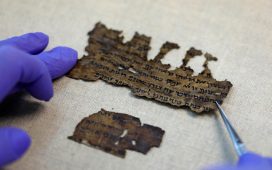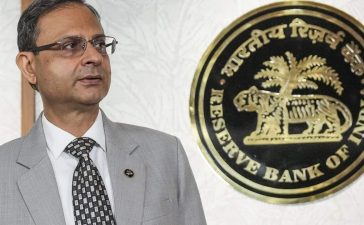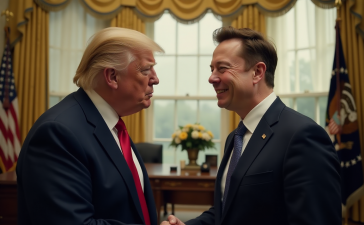The Nobel laureate Enrico Fermi called his student Richard Garwin “the only true genius I’ve ever met”. Garwin, who has died aged 97, is perhaps the most influential 20th-century scientist that you have never heard of, because he produced much of his work under the constraints of national or commercial secrecy. During 40 years working at IBM on an endless stream of research projects, he was granted 47 patents, in diverse areas including magnetic resonance imaging, high-speed laser printers and touch-screen monitors. Garwin, a polymath who was adviser to six US presidents, wrote papers on space weapons, pandemics, radioactive waste disposal, catastrophic risks and nuclear disarmament.
Throughout much of that time, a greater secret remained: in 1951, aged 23, he had designed the world’s first hydrogen bomb.
Ten years earlier, Fermi had had the insight that an atomic bomb explosion would create extraordinarily high pressures and temperatures like those in the heart of the sun. This would be hot enough to ignite fusion of hydrogen atoms, the dynamical motor that releases solar energy, with the potential to make an explosion of unlimited power. This is known as a thermonuclear explosion, reflecting the high temperature, in contrast to an atomic bomb, which starts at room temperature.
Detonation of the atomic bomb in 1945 gave the proof of the first part of this concept, but in secret lectures at the Los Alamos laboratory in New Mexico that summer, Fermi admitted that although an exploding atomic bomb could act as the spark that ignites hydrogen fuel, he could find no way of keeping the material alight.
In 1949, the USSR exploded its first atomic bomb and within months President Harry S Truman announced that the US would develop “the so-called hydrogen or superbomb”. In the same year, Garwin graduated from the University of Chicago with a doctorate in physics and became an instructor in the physics department. Fermi invited him to join Los Alamos as a summer consultant, to help to realise Truman’s goal.
Early in 1951 Edward Teller and Stanislaw Ulam made the theoretical breakthrough: a bomb consisting of two physically separated parts in a cylindrical casing. One component was an atom bomb whose explosion would emit both atomic debris and electromagnetic radiation.
The radiation would move at the speed of light and flood the interior with rays that would compress the second component containing the hydrogen fuel. The impact of the debris an instant later would complete the ignition. This one-two attack on the hydrogen fuel was the theoretical idea that Teller asked Garwin to develop.
Garwin turned their rough idea into a detailed design that remains top secret even today. The device, codenamed Ivy Mike, was assembled on the tiny island of Elugelab in the Enewatak Atoll of the Marshall Islands in the south Pacific. Weighing 80 tonnes and three storeys high, it looked more like an industrial site than a bomb. It was undeliverable by an aeroplane but designed solely to prove the concept.
On 1 November 1952, the explosion, which was 700 times more powerful than the atomic bombs dropped over Hiroshima or Nagasakai, instantly wiped Elugelab from the face of the earth and vaporised 80m tonnes of coral. In their place was a crater a mile across into which the waters of the Pacific Ocean poured. The mushroom cloud reached 80,000ft in 2 minutes and continued to rise until it was four times higher than Mount Everest, stretching 60 miles across. The core was 30 times hotter than the heart of the sun, the fireball 3 miles wide.
The sky shone like a red-hot furnace. For several minutes, many observers feared that the test was out of hand and that the whole atmosphere would ignite.
None of the news reports mentioned Garwin’s name; he was a scientific unknown, a junior faculty member at the University of Chicago. A month later he joined the International Business Machines Corporation, IBM, in Yorktown Heights, New York. The post included a faculty appointment at Columbia, which gave him considerable freedom to pursue his research interests and to continue as a government consultant at Los Alamos and, increasingly, in Washington.
Born in Cleveland, Ohio, the elder son of Leona (nee Schwartz), a legal secretary, and Robert Garwin, a teacher of electronics at a technical high school by day and a projectionist at a cinema at night, Dick was a prodigy; by the age of five he was repairing family appliances.
After attending public schools in Cleveland, in 1944 he entered Case Western Reserve University. In 1947, he graduated with a bachelor’s degree in physics and married Lois Levy; the couple moved to Chicago, where Garwin was tutored by Fermi. He earned a master’s degree in 1948 and a doctorate, aged 21, in 1949. In his doctoral exams he scored the highest marks ever recorded in the university.
In addition to his applied science research for IBM, he worked for decades on ways of observing gravitational waves, ripples in space-time predicted by Albert Einstein. His detectors successfully observed the ripples in 2015. This has opened a new window on the universe, in revealing the dynamics of black holes.
Throughout his career he continued to advise the US government on national defence issues. This included prioritising targets in the Soviet Union, warfare involving nuclear-armed submarines, and satellite reconnaissance and communication systems. A strong supporter of reducing nuclear arsenals, he advised the US president Jimmy Carter during negotiations with the Soviet president Leonid Brezhnev on the 1979 Strategic Arms Limitation Treaty. He believed that the US should nonetheless maintain a strategic balance of nuclear power with the Soviet Union and opposed policies that could upset that: “Moscow is more interested in live Russians than dead Americans.”
After retiring from the University of Chicago in 1993, he chaired the State Department’s arms control and non-proliferation advisory board until 2001. In 2002 he was awarded the National Medal of Science, the US’s highest scientific award, and in 2016 the Presidential Medal of Freedom, the nation’s highest civilian award. In presenting the award, Barack Obama remarked that Garwin “never met a problem he didn’t want to solve”.
Lois died in 2018. Garwin is survived by two sons and a daughter, five grandchildren and a great-grandchild.











